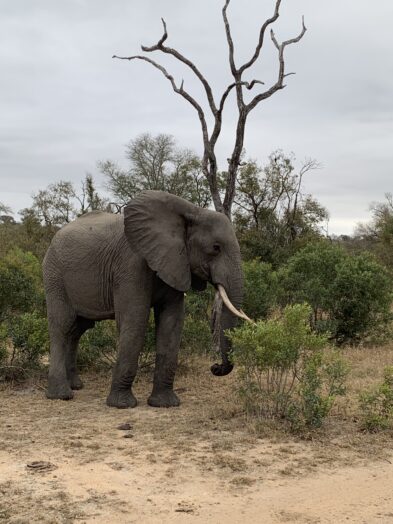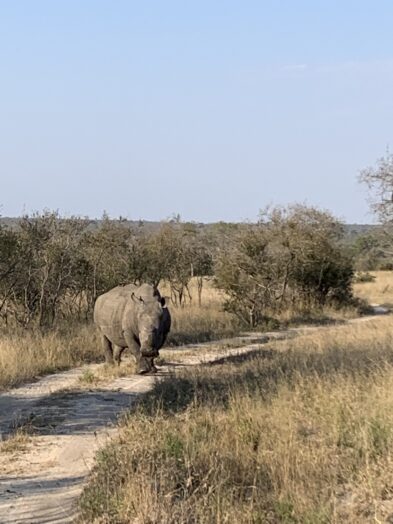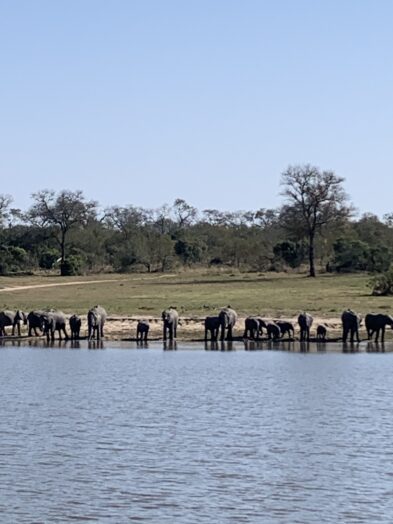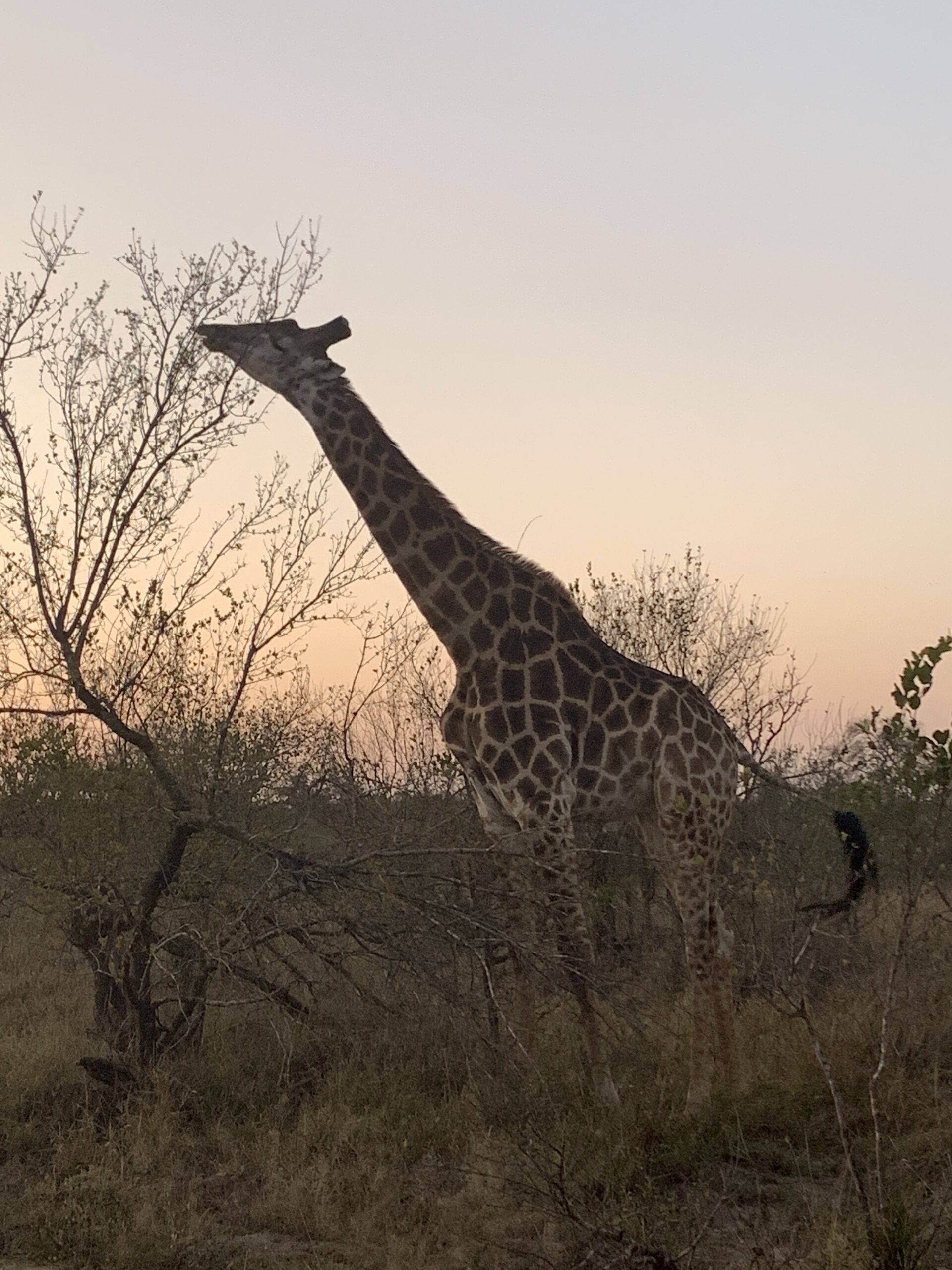True confession: an African safari was not on my bucket list. Not because I didn’t want to go, but the logistics of planning such a trip were dizzying for me. Long (and expensive) flights. Health and vaccination requirements. Logistics of getting around in a foreign country. Not knowing the African safari hunt cost. Not to mention finding someone to mind the pets for an extended period. But when my brother suggested this as a special family trip, I acquiesced. And we ended up having the best South African safari.
Quick backstory. My mother passed away recently and we really wanted to do something to celebrate her life. She loved to travel, often as a tag along with her kids, so we decided an epic trip was the best way to honor her. And yes, she tagged along with us in these adorable memorial key chains we ordered that hold a tiny piece of her.
What you need to know about planning an African safari
The first step is deciding where you want to go. This is where African safari planners can be quite helpful There are several national parks and destinations within Africa. We opted for South Africa because my brother and his wife had been there previously, and personally, I find it less stressful to travel somewhere with people who’ve already experienced a destination.
So how do you choose the spot for the best South African safari? My brother and SIL had a great experience at Arathusa Safari Lodge in Kruger National Park so why reinvent the wheel. (Sidebar: I’m a huge believer that if you take a trip that’s amazing, there’s no shame in repeating that trip. The “go somewhere new” mentality is not part of my travel mantra.) So with the help of my brother’s travel concierge, we planned our epic trip that included a few days in Capetown and a few boozy days (followed by covid days for me) in the Cape Winelands. Articles on both of these amazing destinations to come!
Even though we were working with a travel planner, I did tons of research on my own because I’m one of those travelers who does not like surprises. So I wanted to be prepared for anything (as evidenced by the size of my medical bag). So here are a few things I suggest you research when planning your safari (and after reading my articles and seeing my photos, trust me, you’ll go!).
What is an African safari?
Here’s what a typical safari day looks like: Game drives are early (very) in the morning and in the late afternoon and will span six to eight hours of your day. When I first looked at the schedule, I thought to myself, “I’ll just sleep in a few days and do the afternoon drive” but trust me, you’ll end up with serious FOMO if you don’t go on every drive – case in point: I slept in our final morning and missed seeing the 3 month old leopard cubs. I am NOT a morning person but we’d get a wake up call at 5:30am for a 6am departure and slog down a cup of coffee while we got dressed.
You’ll travel on game drives with a spotter and a guide. The African safari vehicles are these massive, heavy, open-air (some have covers on the top) land rovers that are rugged and can drive over brush. The rides get excessively bumpy but since they’re open air, I doubt that motion sickness would be an issue for most. The spotter sits on a seat on the front of the vehicle literally spotting the roadway and plains for animal tracks. The guide is the driver and the one who will educate you on the animals. Our spotter Ishmael and guide Roy were cousins. Roy grew up in the bush so he knew the area and the animals more intimately than anyone. Ishmael went to school to be a spotter. It’s really amazing the amount of knowledge these guys have – everything from deciphering tracks (which animal, which direction they were going, were they hunting) to examining scat to learning to manage the temperament and physical signals of the animals.
Mid-way through the morning drive, you’ll stop for a coffee break (we enjoyed a shot of Amarula – the African version of Irish cream – in ours!) and some pastries. One thing I researched – there are no bathroom breaks so you’re expected to go like the animals!
Some days you’ll see tons of animals, some days you may only see one or two. The whole concept is trying to spot animals, using the knowledge and experience of the spotter and guide, but sometimes the animals just don’t cooperate. We got lucky and saw a lot of animals on each drive!
Once we got back to the lodge after the morning drive, half our group headed to bed for a nap and half headed to the bar (that’s how we roll!). You’ll have a few hours to kill before the afternoon drive and can relax, edit photos, drink, or (sadly) catch up on work.
The afternoon drive is pretty much the same format, but instead of a coffee break, you’ll stop for happy hour. To me, this was the most magical time of day – sipping a glass of wine, watching the sun set against the African plains, still high on adrenalin from seeing so many cool animals.






Tips for planning an African safari
- Research lodges – Once you decide where to safari, you’ll need to pick a lodge. Most lodges are all-inclusive, meaning they include meals and the game drives. You’ll want to select a destination where you’ll have the best chance of seeing “The Big 5.” My brother had already experienced the best South African safari so choosing a lodge was easy for us. You’ll also want to look at the lodge’s proximity to the airports and means of transport between the two. There are a number of lodges that offer safari tents South Africa.
- Time of year – If you Google the best time of year to go on safari, you’ll get a dozen different answers. We knew we wanted to avoid cold or wet weather so we opted for late July, the end of their winter. The mornings were rather chilly but by the time we returned to the lodge mid-morning, we were stripping down to bathing suits to sit by the pool til the afternoon drive. We were told you have a better chance of spotting animals when the foliage is not quite as lush in the height of growing season. Honestly, I’m not sure it’s worth planning your trip around that as we saw animals on the move most of the time. Just know it can get very cold or very hot in Africa.
- Vaccinations/meds – I probably did more research on this aspect of the trip than anything. I don’t like taking any medications (just tons of anti-aging supplements LOL) because I’m one of those people who seems to have a reaction to everything. But depending on what part of the country you’re going to, there will be vaccinations and prophylactics suggested or required. We did get typhoid and hepatitis shots and we got prescriptions for malaria pills. We opted out of taking the malaria pills because we were going to a lower risk area during the dry season. But this is not the case most places so be sure to do appropriate research and talk to your travel clinic.
- Getting around – There are small airports that access many of the best South African safari lodges through a mix of commercial flights and bush flights. We chose a private van transport to get us to the lodge so we could see some of the residential villages (I would NOT choose this option again as the roads are unpaved so it was two hours of bumping and bouncing that left us all with headaches). It’s a big more costly to take flights directly into the airstrip but worth it IMHO.
- What to pack – This was another heavily researched topic. I was more worried about getting hot or cold so I definitely overpacked, although having a cap and scarf helped ward off the morning chill. The best advice I had read and can give is to layer. I carried a backpack with extra layers just in case. You’ll read a lot about which colors are appropriate for a safari and judging from others at our lodge, no one else read those articles (haha!). I read that you should avoid bright colors, black, and blue because they either attract animals or mosquitoes. So everything I packed was khaki. I’m sure this is good advice in more malaria-prone areas but I saw lots of people wearing bright colored jackets. One other packing tip: know how you’re flying in to your lodge. If you’re on a small bush plane, you can only carry soft-sided duffle bags.
I’ve been on some pretty epic trips but this one topped all of them! I’ve only been home a few weeks but honestly, I’m already thinking about when I can go back. Many of the people we met at our lodge have done multiple safaris and now I see why. It’s a pretty addictive experience.
Be sure to read by full story on Arathusa Safari Lodge and how wonderful it was! Next up, I’m planning a Safari Park Kenya trip!
Best time of year for a safari
The best time of year for a safari can vary depending on the destination and the specific experiences you’re seeking. Here’s a general overview of the best times to visit different safari destinations:
- East Africa (Kenya, Tanzania):
- Great Migration: The best time to witness the Great Migration of wildebeest and zebras in the Serengeti and Masai Mara is typically from July to October when the herds are crossing the Mara River.
- Dry Season: The dry season from June to October offers excellent wildlife viewing opportunities as animals gather around water sources, and vegetation is less dense, making it easier to spot wildlife.
- Southern Africa (South Africa, Botswana, Namibia):
- Dry Season: Similar to East Africa, the dry season (May to October) is the best time for wildlife viewing in southern Africa. During this time, animals congregate around water sources, making them easier to spot.
- Shoulder Season: The shoulder seasons of April/May and September/October offer milder weather, fewer crowds, and good wildlife viewing opportunities.
- Central Africa (Uganda, Rwanda):
- Gorilla Trekking: The dry seasons (June to September and December to February) are the best times for gorilla trekking in Uganda and Rwanda, as the trails are less muddy and the gorillas are easier to locate.
- Rainy Season: The rainy seasons (March to May and October to November) offer lower prices and fewer tourists, but trekking conditions can be more challenging due to heavy rainfall and muddy trails.
What to look for when planning a safari
Planning a safari is super exciting, but it can also be a bit overwhelming. Here are some important things to think about when planning your safari adventure:
- Destination: Look into different safari destinations to find the one that suits your interests and preferences. Some popular safari spots include East Africa (Kenya, Tanzania), Southern Africa (South Africa, Botswana, Namibia), and Central Africa (Uganda, Rwanda).
- Type of Safari: Decide what kind of safari experience you’re after. You can choose from guided tours in national parks, luxury lodges, mobile camping safaris, self-drive safaris, or specialized safaris like walking or birdwatching safaris.
- Wildlife Viewing: Consider what wildlife you want to see and the best time of year to see them. Look into migration patterns of animals like wildebeest, zebras, and elephants, as well as the availability of other iconic species like lions, leopards, rhinos, and giraffes.
- Accommodation: Pick accommodations that match your style and budget. You’ve got options ranging from luxury lodges and tented camps to budget-friendly guesthouses and campsites.
- Transportation: Decide how you want to get around during your safari. You can go for guided safari vehicles, self-drive vehicles, small aircraft for fly-in safaris, or even hot air balloon rides for a unique perspective.
- Guide/Operator: Choose a safari operator or tour company with knowledgeable guides who can make your safari experience even better. Check out reviews, ask for recommendations, and make sure the company follows ethical and sustainable tourism practices.
- Budget: Figure out your budget for the safari, including costs for accommodations, transportation, park fees, activities, meals, and tips. Keep an eye out for special deals or packages to make the most of your budget.
- Health and Safety: Check if you need any vaccinations or medications for your destination. Also, make sure you have the best travel insurance for African safari that covers medical emergencies, trip cancellations, and evacuations. Follow safety guidelines given by your tour operator and local authorities.
- Packing List: Make a packing list based on the climate and activities of your safari destination. Don’t forget essentials like lightweight clothing, sturdy walking shoes, sunscreen, insect repellent, binoculars, camera gear, and any medications or personal items you may need.
- Cultural Considerations: Respect local customs, traditions, and wildlife conservation efforts during your safari. Learn about the culture and etiquette of the local communities you may encounter and try to minimize your environmental impact while supporting local conservation initiatives.
By thinking about these things and planning carefully, you can make sure your safari is an unforgettable and amazing experience while increasing your chances of seeing incredible wildlife and breathtaking landscapes.


Comments are closed.